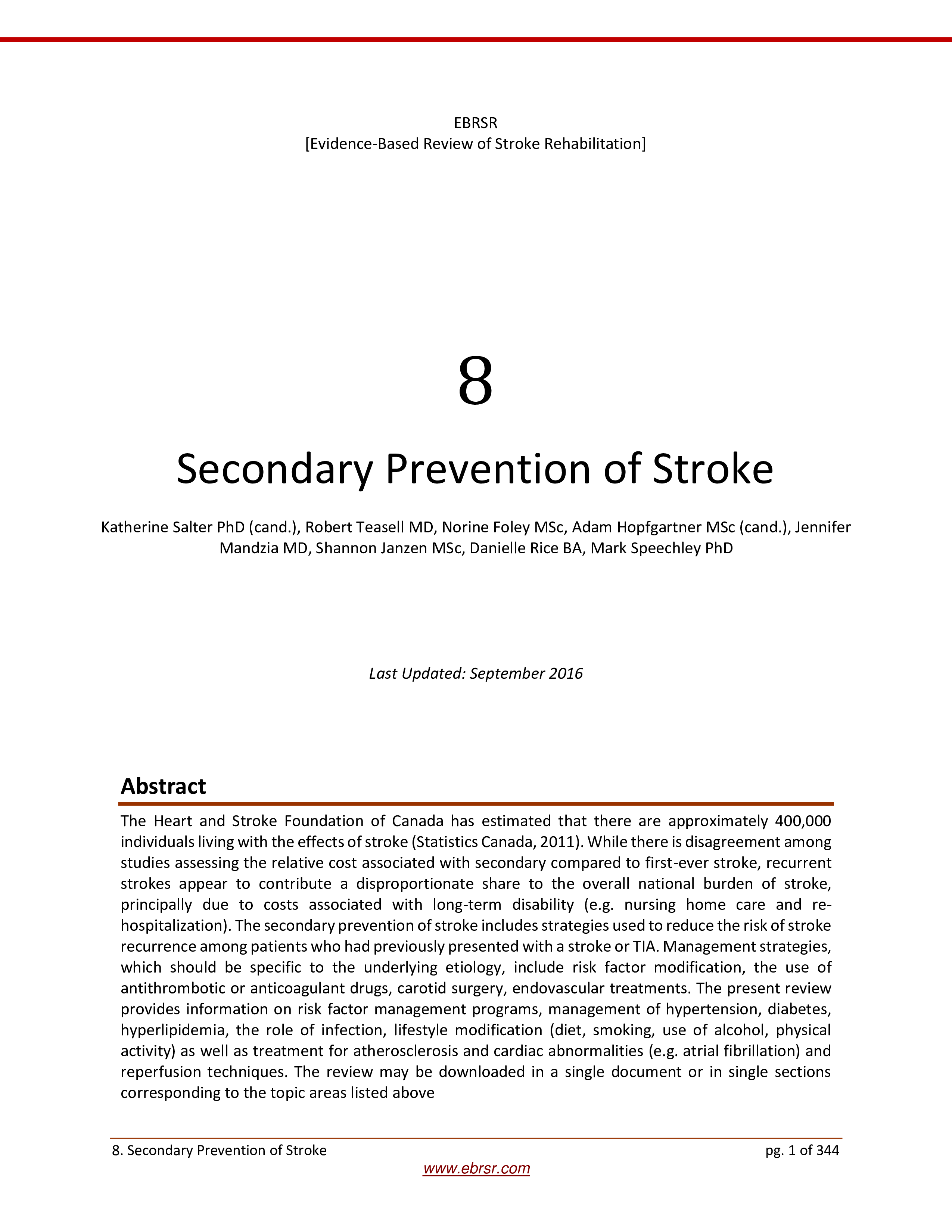Secondary Prevention of Stroke
Chapter 8
The Heart and Stroke Foundation of Canada has estimated that there are approximately 400,000 individuals living with the effects of stroke (Statistics Canada, 2011). While there is disagreement among studies assessing the relative cost associated with secondary compared to first-ever stroke, recurrent strokes appear to contribute a disproportionate share to the overall national burden of stroke, principally due to costs associated with long-term disability (e.g. nursing home care and re-hospitalization). The secondary prevention of stroke includes strategies used to reduce the risk of stroke recurrence among patients who had previously presented with a stroke or TIA. Management strategies, which should be specific to the underlying etiology, include risk factor modification, the use of antithrombotic or anticoagulant drugs, carotid surgery, endovascular treatments. The present review provides information on risk factor management programs, management of hypertension, diabetes, hyperlipidemia, the role of infection, lifestyle modification (diet, smoking, use of alcohol, physical activity) as well as treatment for atherosclerosis and cardiac abnormalities (e.g. atrial fibrillation) and reperfusion techniques. The review may be downloaded in a single document or in single sections corresponding to the topic areas listed above.
Keywords:
Risk factors, TIA, education, hypertension, hyperlipidemia, cholesterol, diabetes, glycemic control, infection, diet, anti-oxidants, homocysteine, folic acid, smoking, alcohol, physical activity, atherosclerosis, atrial fibrillation, antiplatelet, anticoagulant, carotid endarterectomy, carotid artery angioplasty, stenting.



